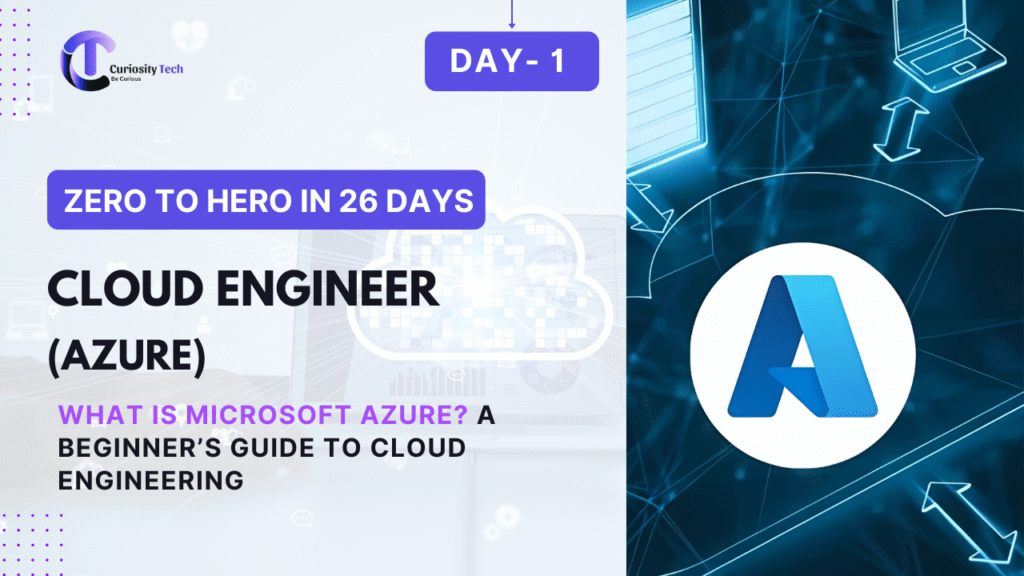Introduction
Azure Cloud is rapidly evolving, and staying ahead of the curve is essential for cloud engineers, developers, and enterprise architects. 2025 brings new trends, tools, and best practices that will shape how organizations build, deploy, and manage cloud applications.
At curiositytech.in, learners gain insight into emerging Azure technologies, hands-on exposure to cutting-edge features, and practical strategies to implement them in real-world projects.
1. Trend Analysis Framework
To identify key trends, we analyze Azure developments across five dimensions:
- Compute & Serverless Innovations
- AI & Machine Learning Integration
- Hybrid & Multi-Cloud Management
- Security & Compliance Enhancements
- Automation, DevOps & Observability
Diagram: Azure Trends 2025 Overview
———————–
| Azure Trends 2025 |
———————–
| Compute & Serverless |
| AI & Machine Learning |
| Hybrid & Multi-Cloud |
| Security & Compliance |
| DevOps & Automation |
2. Compute & Serverless Innovations
Key Developments
- Azure Functions Premium & Elastic Plan: Auto-scale with near-zero latency
- Containerization Growth: AKS improvements, GPU-enabled clusters
- Edge Compute Expansion: Azure Stack Edge and IoT-enabled serverless processing
Impact on Engineers:
- Focus on scalable, cost-efficient compute
- Design applications to leverage serverless and container workloads
- Integrate edge devices for low-latency processing
Scenario Example:
A logistics company uses Azure Functions at the edge to process real-time IoT sensor data from delivery vehicles, reducing decision-making latency from minutes to seconds.
3. AI & Machine Learning Integration
Key Developments
- Cognitive Services & Azure OpenAI: Advanced natural language processing, image recognition, and AI chatbots
- AI-Powered DevOps: Automated testing, anomaly detection, and predictive scaling
- AutoML & Custom ML Models: Simplified model deployment without deep ML expertise
Impact on Engineers:
- Integrate AI features into web, mobile, and enterprise apps
- Use pre-built APIs for faster development cycles
- Implement predictive maintenance and intelligent automation
Scenario Example:
An e-commerce platform implements AI-driven recommendation engines using Azure Cognitive Services, increasing customer engagement and conversion rates.
4. Hybrid & Multi-Cloud Management
Key Developments
- Azure Arc & Azure Stack: Manage on-prem and multi-cloud resources centrally
- Unified Policy Enforcement: Azure Policy for hybrid and multi-cloud governance
- Global Workload Distribution: Multi-region deployment strategies for resilience
Impact on Engineers:
- Manage legacy systems and cloud resources from a single pane of glass
- Ensure compliance, security, and consistent configuration across environments
- Enable hybrid AI and analytics solutions
5. Security & Compliance Enhancements
Key Developments
- Zero-Trust Architecture Adoption: Enhanced identity and access management
- Advanced Threat Protection: Azure Sentinel with AI-driven threat detection
- Data Residency & Compliance Tools: Improved governance for GDPR, HIPAA, and ISO standards
Impact on Engineers:
- Implement multi-layered security strategies
- Automate threat detection and incident response
- Maintain audit readiness and compliance reporting
Scenario Example:
A healthcare provider uses Azure Sentinel integrated with Arc-enabled servers to continuously monitor patient data access, ensuring compliance with HIPAA regulations.
6. Automation, DevOps & Observability
Key Developments
- Infrastructure as Code (IaC): Terraform, Bicep, and ARM templates standardization
- CI/CD Enhancements: Azure DevOps Pipelines with automated testing and deployment
- Observability & Analytics: Azure Monitor, Application Insights, and Log Analytics for proactive insights
Impact on Engineers:
- Automate deployment, monitoring, and scaling
- Improve development cycles and operational efficiency
- Detect and resolve issues before impacting end-users
Scenario Example:
A fintech startup implements Azure DevOps pipelines with automated security and performance checks, reducing deployment errors by 75%.
7. Actionable Insights for Cloud Engineers in 2025
- Master Serverless & Edge Computing: Focus on Azure Functions, AKS, and IoT integration
- Integrate AI into Applications: Leverage Cognitive Services and Azure OpenAI for intelligent features
- Adopt Hybrid & Multi-Cloud Strategies: Implement Azure Arc, Stack, and multi-region deployments
- Prioritize Security & Compliance: Implement zero-trust, Sentinel, and automated governance
- Automate DevOps & Monitoring: Use IaC, pipelines, and observability tools to improve reliability
At curiositytech.in, learners experiment with these trends in hands-on labs, building production-grade solutions that incorporate serverless compute, AI, hybrid integration, security, and automation.



